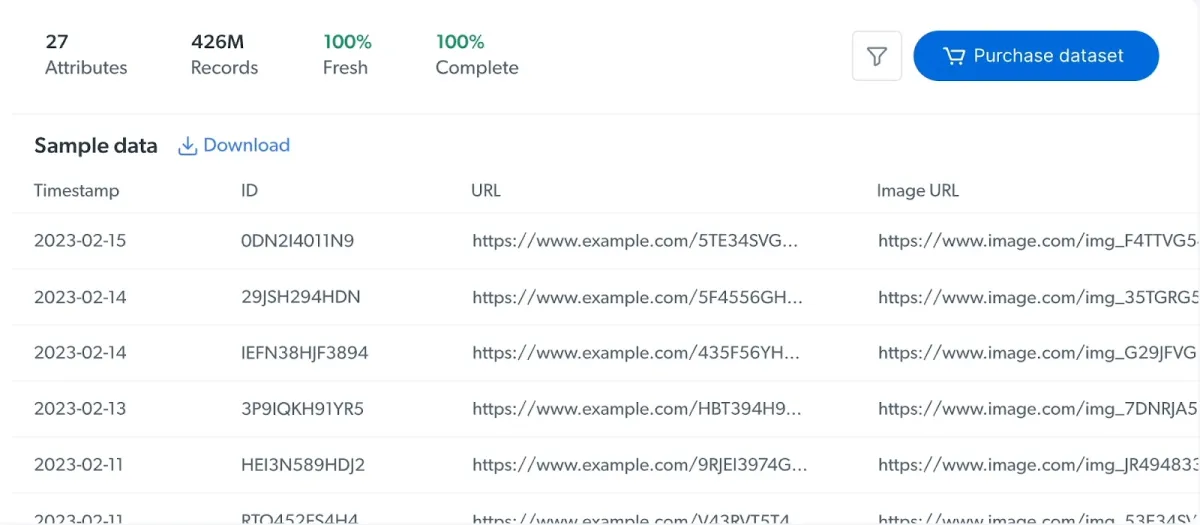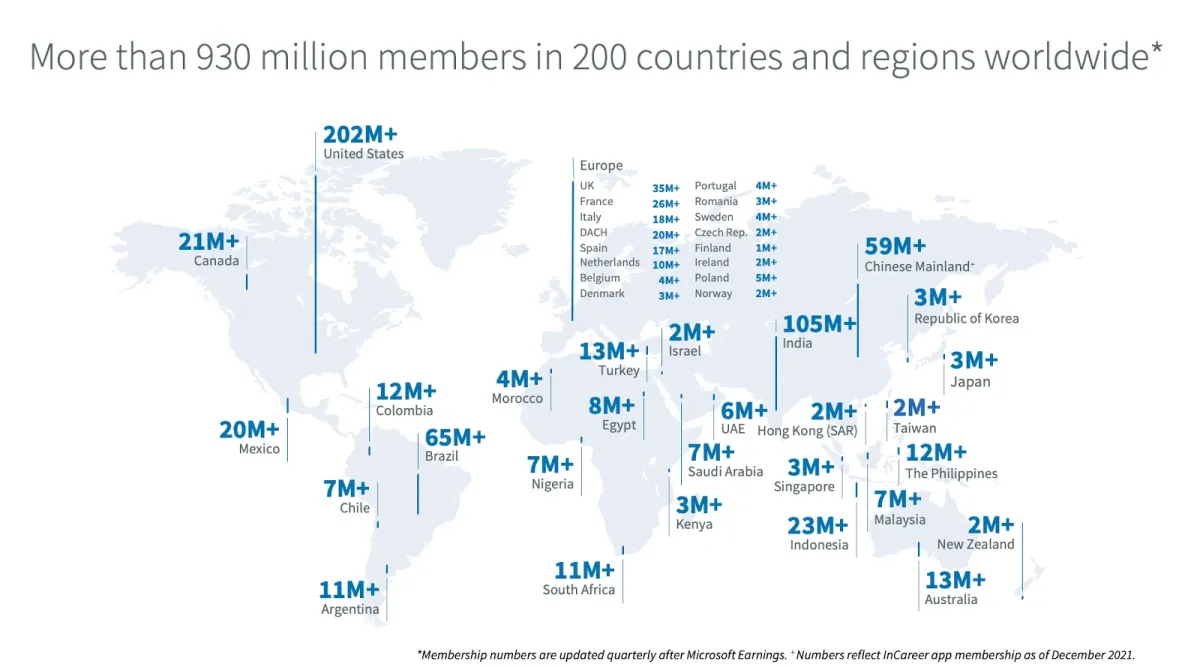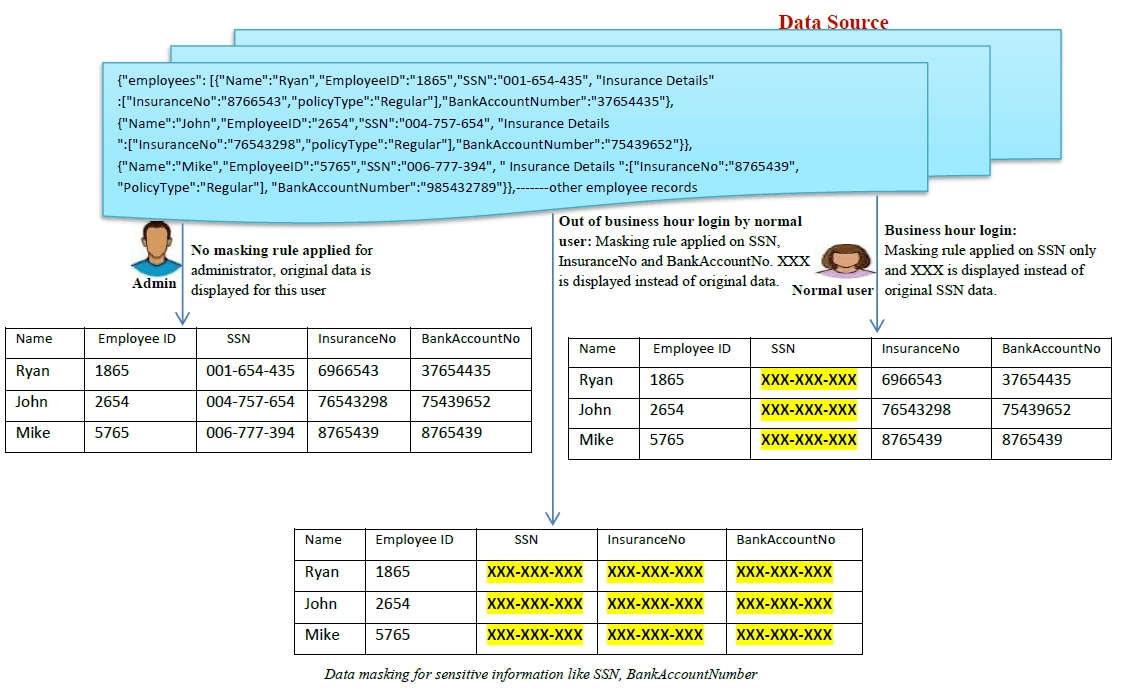LinkedIn datasets can be categorized into profile data and company data:
- Company data: Basic company data, employee data, job postings, hiring trends, and engagement data.
- Profile data: Public profile data, employment history, education, certifications, connections and profile activity.
LinkedIn dataset providers: Features & pricing
| Vendor | Refresh time | Format | Starting price(mo) | Free trial |
|---|---|---|---|---|
| Bright Data | Monthly | JSON NDJSON CSV JSON lines | $1,200 | N/A |
| Coresignal | Monthly Every 6 hours | CSV JSONL Parquet | $49 | 14 days |
| People Data Labs | Monthly | JSON | $98 | 30 days |
1. Bright Data

Bright Data is a web data platform specializing in web scraping solutions. Their services include proxy tools, web scraper APIs, and datasets in various categories such as e-commerce, social media, real estate, and market research. They offer datasets for LinkedIn, including people profiles, company profiles, job listings, and posts.
With Bright Data’s “Request a Custom Dataset” feature, users can get datasets tailored to their specific needs. Pricing for this service is based on compute costs and record costs. They offer both a one-time purchase option starting at $500 and a subscription plan starting at $1,200.
Pricing:
- Free samples available.
- Starting at $500 for 200K records
2. Coresignal

Coresignal offers comprehensive datasets sourced from various online platforms, including professional networking sites, company websites, and public databases. They provide both current and historical data, updated monthly. Their data offerings include raw data (real-time and historical, covering up to 5 years from 20 different sources), multi-source company datasets, and API integrations. One of their key features is the Historical Headcount API, which allows users to access historical employee headcount data for organizations.
Coresignal’s API-linked database is refreshed every six hours. Dataset pricing depends on factors such as contract length, data locations, and source tiers. They also offer a 14-day free trial for their Database APIs, with monthly plans starting at $49.
Pricing:
- Starting at $49 per month, including 250 API credits.
- Offers a free tier (14 days) available with 200 collect credits for testing purposes.
3. People Data Labs

People Data Labs (PDL) is a B2B data provider specializing in datasets on individuals and companies. Their offerings include APIs like the Company Search API and Company Enrichment API, enabling seamless access and integration of data into applications. The datasets include attributes such as year founded, industry, website domain, and LinkedIn URL. PDL also provides a free company dataset and limited-access APIs (100 credits) for users to explore their services at no cost.
Pricing:
- Offers free company dataset and limited-access APIs (100 credits)
- Starting at $98/mo
What is a LinkedIn dataset?
LinkedIn dataset is a collection of structured data obtained from the LinkedIn platform. LinkedIn data refers to the user-generated information available on the LinkedIn platform, such as user profiles, company pages, industry trends, and events.
What data is included in the LinkedIn dataset?
A LinkedIn dataset includes different data points related to users, companies, and job postings. Here are major data points included in a LinkedIn dataset:
- LinkedIn profile dataset: Work experience title, position, current company, education, connections, avatar, skills, and endorsements.
- LinkedIn company dataset: Company page, industry size, # of followers, website, location, and employee counts.
- LinkedIn job posting dataset: Job title, date posted, number of applicants, requirements, company, and location.
Types of LinkedIn Datasets
There are different types of LinkedIn datasets that can be categorized based on their sources and the methods used to obtain them. The choice of LinkedIn dataset depends on the specific needs, use case, or budget of individuals and businesses. The main types of LinkedIn datasets include:
- Public LinkedIn datasets: They can be accessed through LinkedIn’s public APIs and by web scrapers. LinkedIn APIs provide a more reliable way to access LinkedIn data. However, APIs have rate limits and restrictions that regulate the volume and frequency of data requests.
Web scraping allows users to collect specific data points tailored to their specific requirements. However, web scraping may violate LinkedIn’s terms of service and data privacy regulations (e.g., GDPR). - Proprietary LinkedIn datasets: Data is available through its premium products and services, such as Sales Navigator and LinkedIn Talent Insights. Proprietary datasets provide businesses and recruiters with exclusive access to certain data points that may not be available through public datasets.
- Third-party LinkedIn datasets: Collections of data obtained from third-party sources and supplemented with LinkedIn information.
How to access LinkedIn datasets?
There are several methods to access LinkedIn datasets. Regardless of the method you select, it is essential to adhere to data privacy regulations and LinkedIn’s terms of service.
- LinkedIn API: LinkedIn provides several APIs that allow developers to access and obtain data from the platform. Some of LinkedIn’s APIs include:
- LinkedIn Company API: Provides access to publicly accessible LinkedIn members’ profile data, such as name, headline, profile picture, and location.
- LinkedIn Profile API: Allows users to obtain company data, including company description, industry, and employee count.
- Web Scraping: Web scraping techniques can be used to access and extract publicly accessible LinkedIn data. This method of obtaining LinkedIn data can be suitable for large-scale web scraping projects.
- Third-Party Data Providers: LinkedIn data providers are companies or platforms that provide access to LinkedIn datasets through third-party datasets, APIs, or web scraping tools (Figure 2). Some companies specialize in providing tailored LinkedIn datasets for a specific use case or industry.
Figure 2: A sample of Bright Data’s LinkedIn dataset

Source: Bright Data
- Data Enrichment Services: Integrate LinkedIn data with other data sources to provide a more comprehensive individual customer or prospect profile. These services can assist sales and marketing teams in better targeting potential customers.
Since data enrichment services typically focus on enriching individual data points, they may be limited to providing industry-level information. If you require broader insights that combine LinkedIn data with other sources, third-party data providers offer more extensive and targeted insights.
Applications of LinkedIn Datasets
1. Recruitment and talent sourcing
LinkedIn datasets can help recruiters identify talents and streamline their talent acquisition process. LinkedIn datasets provide a significant amount of data on professionals, including their skills, work experiences, and education. This information can be used to conduct a targeted candidate search, tailor talent acquisition strategies, and identify areas for improvement in employer branding efforts.
2. Market research and competitor analysis
LinkedIn datasets might be useful for market research and competitive analysis. Organizations can use the professional data accessible on LinkedIn to:
- Reveal industry trends like emerging technologies, popular job titles, and in-demand skills
- Benchmark a company’s performance against its competitors
- Identify potential partners or acquisition targets based on factors such as company size and industry.
3. Lead generation
LinkedIn has more than 930M members with over 63 million registered companies (Figure 3). LinkedIn datasets enable sales professionals to target the right prospects and create tailored outreach strategies. They can analyze a prospect’s professional background, including their connections and interests, enabling them to create personalized outreach messages. Sales professionals can also reveal upcoming events and conferences by utilizing LinkedIn data, allowing them to expand their network and identify new leads.
Figure 3: Figure 3: Showing the numbers of LinkedIn members from 200 countries and regions worldwide

Source: LinkedIn1
Best practices for using LinkedIn data ethically and responsibly
Ensuring web scraping ethics when collecting and utilizing data is important to avoid legal and ethical concerns. For example, HiQ Labs, a data analytics company, scraped publicly available LinkedIn profile data for a professional skill analysis. However, LinkedIn sued HiQ Labs in 2019, alleging that HiQ Labs violated the Computer Fraud and Abuse Act (CFAA) by accessing LinkedIn’s data without authorization. The Ninth Circuit determined that HiQ Labs’ actions did not violate the CFAA because the data was publicly accessible.
- Follow LinkedIn’s terms of service: LinkedIn outlines data usage limitations, unapproved use cases, and access limitations in LinkedIn profiles in their terms of service. Adhere to LinkedIn’s terms of service to ensure that you are complying with their guidelines and policies.
- Compliance with data protection laws: It is essential to adhere to regional and industry-specific regulations, such as the General Data Protection Regulation (GDPR) in the European, the California Consumer Privacy Act (CCPA) in the United States.
- Secure storage: You can employ access restrictions to limit who can access your stored data or use secure storage infrastructure, such as firewalls and intrusion detection systems, to protect data from unauthorized access.
- Anonymize data: There are numerous techniques for anonymizing data, including data masking, pseudonymization, and generalization(Figure 4). Data anonymization removes or alters personally identifiable information (PII) to assist organizations in protecting the privacy and adhering to data protection regulations.
Figure 4: Data masking substitutes sensitive data with other symbols and characters

Source: Informatica
Scraping LinkedIn data vs. utilizing LinkedIn datasets: which is better?
LinkedIn strictly forbids scraping in its terms of service, and doing so may result in account suspension or legal consequences. Using LinkedIn datasets is a safer choice if you prioritize legal compliance and require well-structured data.
Scraping data directly from LinkedIn may provide more up-to-date information. However, web scraping may require technical expertise to set up and maintain web scrapers, and it can be time-consuming and resource-intensive compared to pre-built datasets.
On the other hand, pre-built datasets save time and resources, and using a dataset from a reputable data provider may eliminate legal and ethical concerns. However, pre-built datasets may not be tailored to specific requirements. It is crucial to select a data provider that allows users to modify the data to fit their unique needs.

Comments
Your email address will not be published. All fields are required.